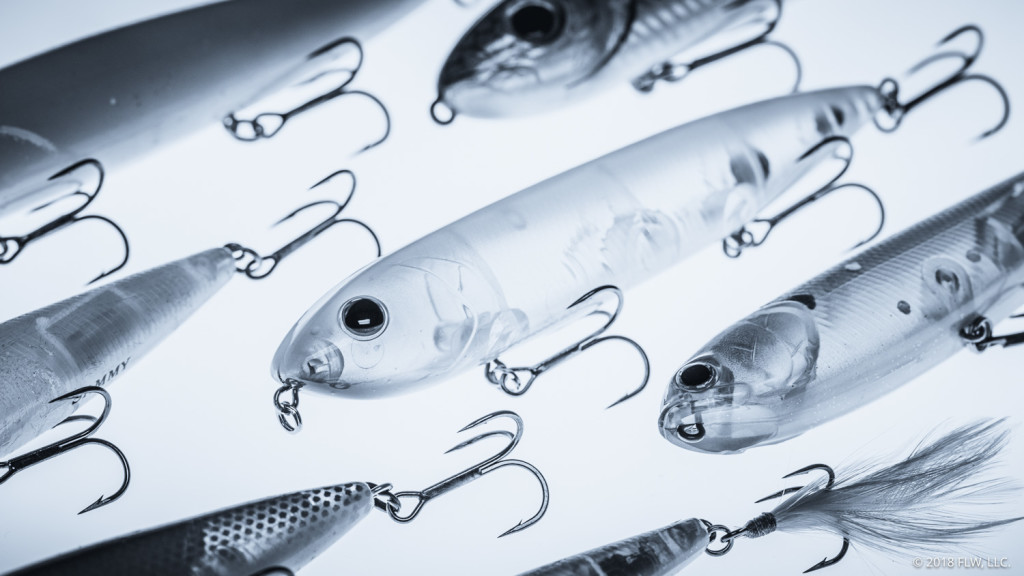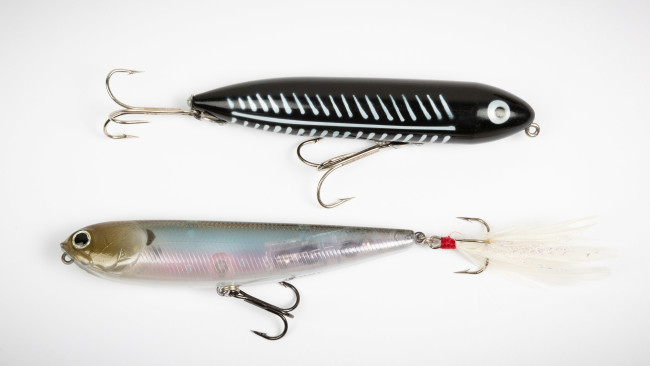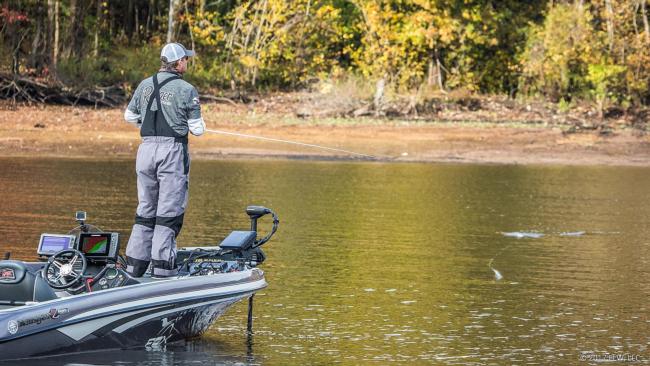How to Fish Walking Topwaters for Bass
Everyone’s favorite topwater plug still catches fish like crazy

Walkers, or walk-the-dog-style topwater baits, are among the most popular and most effective lures for catching bass that are willing to breach the water’s surface to eat. A walker is the first choice in many situations from spring through fall, and one of the essentials that every bass angler must learn to fish.

What is a walker
“Walker” refers to the side-to-side “walk-the-dog” surface action used to fish this type of bait. Walkers are generally long, slender stick baits, usually made of hard plastic but occasionally of wood, that include some type of rattle or knocker to add audible attraction.
Walkers range in size from about 3 1/2 inches long to as much as 6 inches long, with one or two treble hooks affixed to the belly and another on the tail. A few “mega-sized” specialty topwater walkers go even bigger than that.
There are also various spinoffs of the traditional walker. Bait designers might incorporate a mouth that spits, sprays or to some degree pops to add a little extra to the action. One of the most common in that category is the pencil popper, which is a long topwater bait with a bulbous rear end that narrows down to a skinny “head” with a cupped mouth. There are also skinny, subtler finesse walkers that work best in some situations. It’s a crowded category with a lot of options you should try.
Walkers in action
When fished on the surface, a walker’s nose zigs and zags back and forth as the entire body pivots from one side to the other. The range of motion depends on the speed of retrieve, the bait design and the angler’s skill level, but many walkers can be made to rotate 180 degrees with every twitch. As it walks, the bait kicks up an impressive surface commotion.

How to fish walkers
Walking the dog is all about rod tip cadence, controlling slack in the line with the reel and getting in a rhythm. It goes something like this:
1. Leave a little slack in the line between the rod tip and the bait.
2. Keep the rod tip pointed down, and use the rod to snap the slack. Try to avoid keeping the line tight, which would result in the bait being pulled too far forward with each twitch. Rather, “release” the slack after each twitch so the bait can turn to the side.
3. Repeat step 2 to turn the bait back the other direction. Then continue with the cadence.
When done right, the bait will turn side to side as it gradually travels toward you. Slowly take up excess line as it gets closer.
Walkers are tremendous tools for covering water, but a good angler can adjust his cadence and presentation based on the target area. For instance, around flooded bushes, docks, cypress trees, shade lines, stumps or any other type of precise target, walking the dog “in place” keeps the bait zigzagging over the strike zone for a longer period of time. The key is to leave extra slack in the line to turn the bait without pulling it toward you too far.
Bass will swipe at a topwater plug sometimes and may manage to miss all those treble hooks. Pausing the bait in place will get some fish to come back for it, but if that doesn’t work, just keep walking it and there’s a good chance you’ll get a second shot.
Once the fish has the bait, use a sideways sweep set to pull tight. There’s no need for a hammering hookset that might rip the treble hooks from the fish’s mouth.
The final key to catching fish on walkers is to choose the right color. It’s never wrong to match the color pattern to the local forage. In gin-clear water, many anglers prefer clear or transparent color patterns with accent paint on the back. Black is a good choice in overcast conditions, while white or bone is one of the best all-around options. Smallmouth anglers sometimes use plugs with chartreuse, pink or orange accents. A feathered rear treble is another good attractant that some anglers swear by.

Where to fish walkers
You can walk the dog over grass, but not through it. That’s just about the only limiting factor regarding where you can fish a walker aside from your own casting ability.
A highly skilled caster can place a walking plug under obstructions such as low-hanging limbs and dock structures, or land it in a narrow opening next to a brush pile. That kind of aggressive cover-fishing approach can work very well: Make short casts, walk the bait past the sweet spot, then reel up and repeat.
More often, however, a walker is used to cover water and fish aggressively. That might mean burning down a bank, bombing casts to faraway schooling fish, fan-casting large flats, working the edge of a grass bed or “calling up” suspended fish over timber and brush.
Walkers work just about anywhere bass live, deep or shallow, as long as the fish are willing to break the surface. The pattern usually starts in the spring when the water temperature surpasses 60 degrees and continues into the fall until the temperature falls back down again.
The best equipment for fishing walkers
Line: Monofilament and braid are the only line options. They both float, which is key to achieving the walk-the-dog action. Many anglers use only braid. Others add a leader of monofilament because mono is stiffer than braid and is less likely to tangle on the hooks. Straight mono still works fine, but the stretch in the line can cost you some hookups. Stick to 20- to 30-pound-test braid and 15- to 20-pound-test monofilament.
A good tip for improving a walker’s action is to connect the line with a split ring or a snap. The “loose” connection allows a full range of motion for the bait to walk.
Rods: Though most pros use baitcasting rods, selection varies depending on personal preference, bait weight and the situation. Shorter models (6 feet, 10 inches to 7 feet) make it easier to work the rod tip without fatigue and to roll-cast into tight quarters. Longer rods (7 feet, 2 inches to 7 feet, 4 inches) can bomb the bait and take up the line quickly if a fish bites a long way out.
A few people fish a walker on spinning tackle. A 6-10 to 7-3 model is about right.
You want a medium to medium-heavy rod with a soft enough tip to load up a long cast and to surge with a hooked fish without pulling the hooks loose.
Reels: A 7.1:1 or 7.3:1 retrieve ratio is about right when choosing baitcasting reels for walking baits.
Bait recommendations
Line recommendations
Rod recommendations
St. Croix Mojo Bass 7-1 medium
Abu Garcia Villain 7-foot medium-heavy
Lew’s Custom Speed Stick Lite 6-10 medium-heavy
Reel recommendations